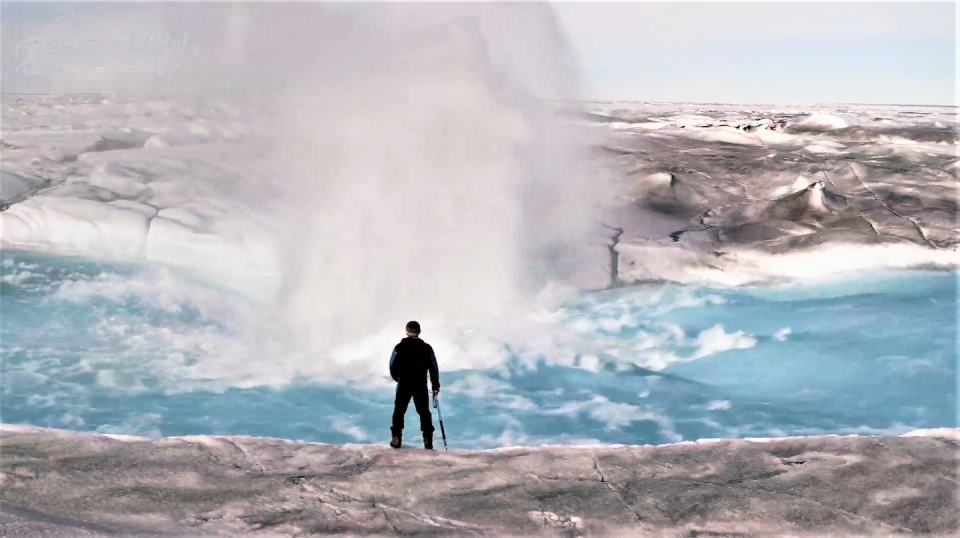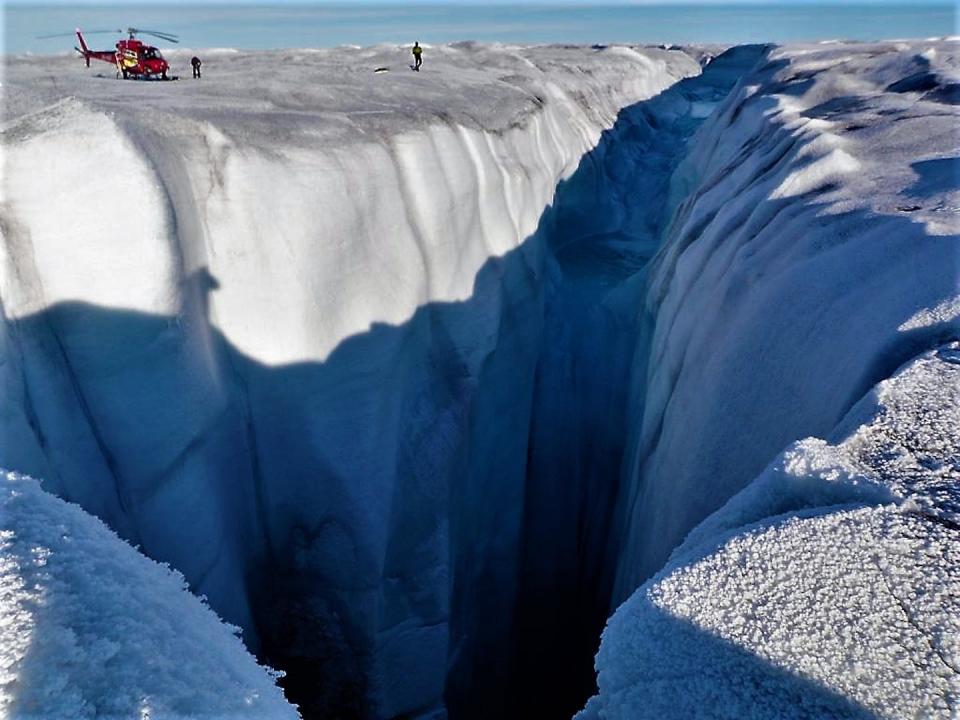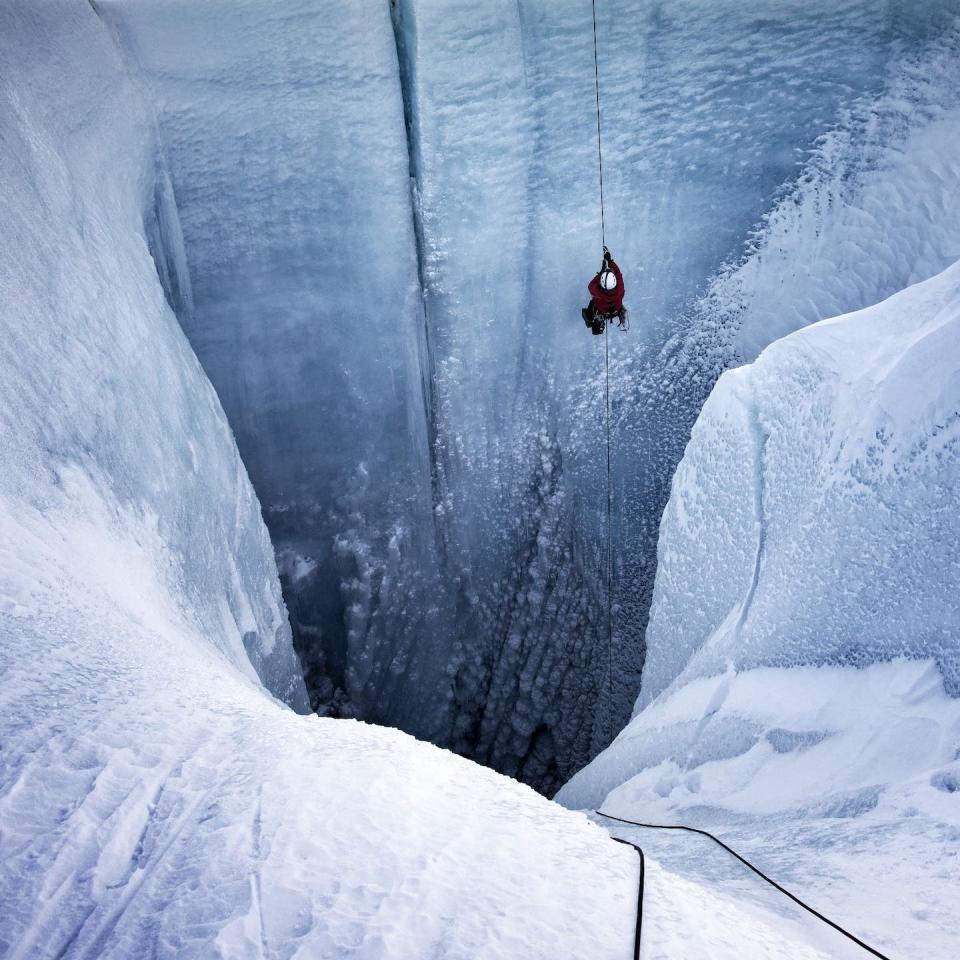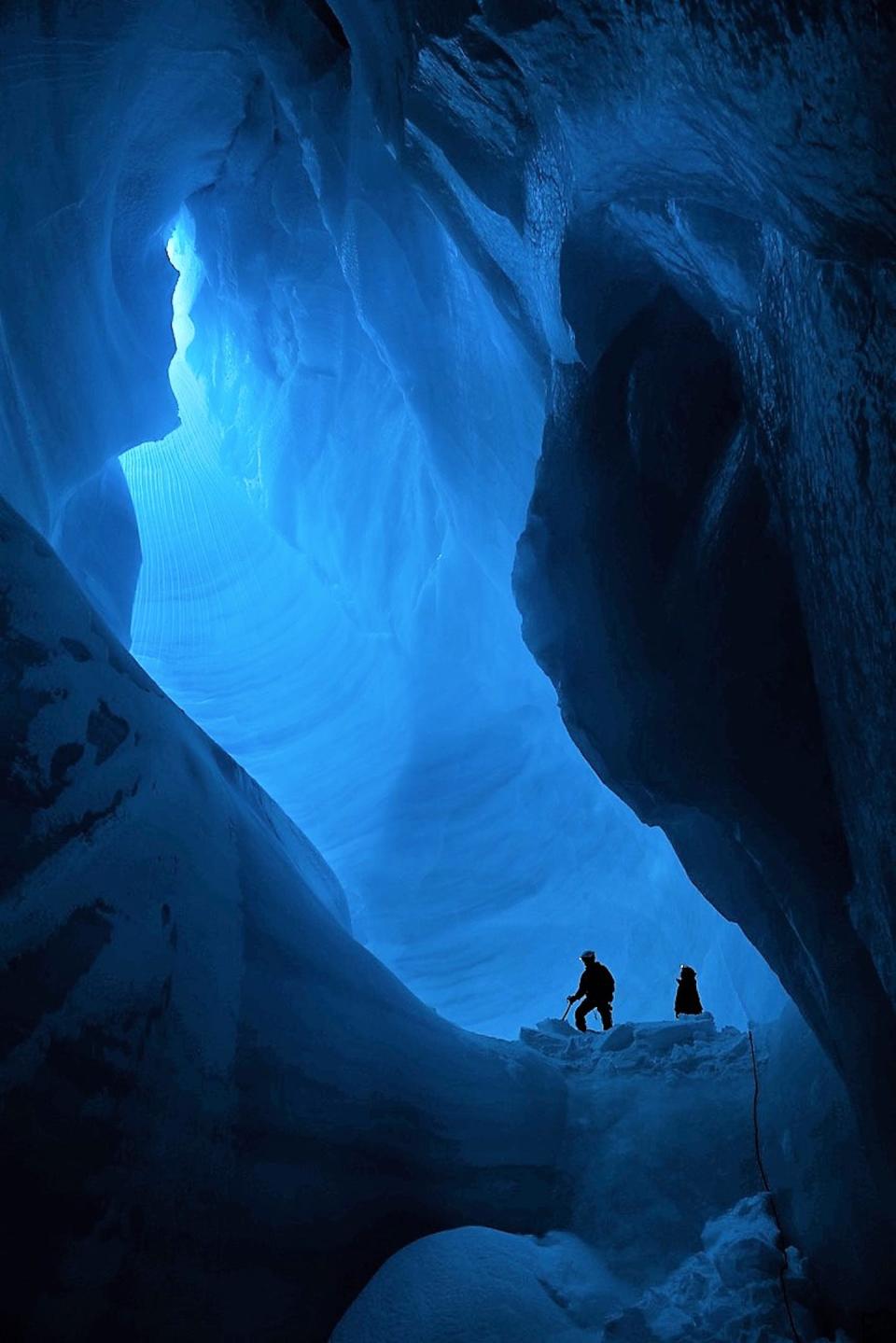I am striding along the steep bank of a raging whitewater rapids, and although the canyon is only the width of a motorway, the flow of the river is greater than that of London’s River Thames. The deafening roar and roar of the cascading water is incredible; It is a humble reminder of the raw power of nature.
As I turn a corner, I am amazed by a completely surreal sight: A huge crack has opened in the river bed and is swallowing water in a huge whirlpool, spewing out huge amounts of water. This may sound like a computer-generated scene from a blockbuster action movie, but it’s real.

A moulin is forming on the Greenland ice sheet directly in front of me. But this isn’t actually supposed to happen here; Current scientific understanding does not reconcile this reality.
As a glaciologist, I have spent 35 years studying how meltwater affects the flow and stability of glaciers and ice sheets.
This large hole in the surface is just the beginning of the meltwater’s journey into the interior of the ice sheet. As it moves towards Moulins, it opens a complex network of tunnels that extend hundreds of meters through the ice sheet, down to the ice sheet bed.
Once it reaches the bed, meltwater flows into the ice sheet’s subglacial drainage system; Similar to an urban stormwater network, but with a system that is constantly evolving and backed up. It carries meltwater to the ice margins and eventually reaches the ocean; This has major consequences for the thermodynamics and flow of the overlying ice sheet.
Scenes like this and new research into ice sheet mechanics challenge conventional thinking about what’s happening inside and beneath ice sheets, with striking results even though the observations are extremely challenging. They suggest that the world’s remaining ice sheets in Greenland and Antarctica are much more vulnerable to climate warming than models predict, and may be destabilizing the ice sheets from within.
This is a tragedy in the making for half a billion people living in vulnerable coastal areas, as the Greenland and Antarctic ice sheets are giant frozen freshwater reservoirs that lock in global sea level rise equivalent to more than 65 meters (over 200 feet). . Mass loss has been accelerating since the 1990s, becoming both a major factor and a wild card in future sea level rise.
How do narrow cracks in the ice become gaping maws?
Moulins are near-vertical channels that capture and channel meltwater runoff from the ice surface each summer. There are thousands of them in Greenland, and they can reach impressive sizes due to the thickness of the ice and the exceptionally high rates of surface melting experienced. These deep chasms can be as large as tennis courts at the surface and have chambers hidden in the ice beneath that could swallow cathedrals.
But this new moulin I witnessed is really far from the rift fields and molten lakes that current scientific understanding requires it to form.


In a new paper, Dave Chandler and I show that ice sheets are filled with millions of tiny hairline cracks that are forced open by meltwater from the rivers and streams that cut them.
Because glacier ice is so brittle at the surface, such cracks are ubiquitous in the melt zones of all glaciers, ice sheets, and ice shelves. However, because they are so small, they cannot be detected by satellite remote sensing.
We have found that in many cases, stream-fed hydrofractures like this allow water to penetrate hundreds of feet below before freezing, without the fracture necessarily having to penetrate the bed to form a full-fledged moulin. However, even this partial depth of hydrofractures has a significant impact on the stability of the ice sheet.
As water flows in, it damages the structure of the ice sheet and releases its latent heat. The ice fabric warms and softens and therefore flows and melts faster, just like heated candle wax.


Current-driven hydrofractures mechanically damage the ice and transfer heat into the bowels of the ice sheet, destabilizing it from the inside. As a result, the internal structure and structural integrity of ice sheets become more vulnerable to climate warming.
Emerging processes that accelerate ice loss
Over the last two decades when scientists have been seriously tracking ice sheet melting and flow, melting events have become more common and more intense as global temperatures have risen; This has been exacerbated by Arctic warming, which is almost four times faster than the global average.
The ice sheet is also flowing and calving icebergs much faster. It has lost nearly 270 billion metric tons of ice per year since 2002: an increase of more than one and a half centimeters in global sea level. On average, Greenland currently contributes about 1 millimeter (0.04 in) annually to the sea level budget.
A 2022 study found that even if atmospheric warming stopped now, a sea level rise of at least 27 centimeters (about 1 foot) was inevitable due to Greenland’s imbalance with its climate over the past two decades.
It is very important to understand the risks ahead. But the current generation of ice sheet models used to assess how Greenland and Antarctica will respond to future warming do not account for the discovered expansion processes. This means that the sea level rise forecasts of the models used to inform Intergovernmental Panel on Climate Change (IPCC) reports and policymakers around the world are conservative, and rates of global sea level rise are low in a warming world.


Our new finding is just the latest. Recent research has shown that:
Other papers in recent months have also described previously unknown feedback processes beneath ice sheets that computer models cannot currently include. Often these processes occur on a scale too small for the models to detect, or the simple physics of the model means that the processes themselves cannot be captured.
Two such studies independently identify increased submarine melting at the stranding line, where major outlet glaciers and ice streams in Greenland and Antarctica flow into the sea and begin to lift their beds as floating ice shelves. These processes greatly accelerate the ice sheet’s response to climate change and, in the case of Greenland, could potentially double future mass loss and its contribution to rising sea level.
Current climate models reduce risks
Along with other applied glaciologists, “structured expert opinion” and a few friendly modelers, I argue that the current generation of ice sheet models used to inform the IPCC do not capture the abrupt changes or emerging risks observed in Greenland and Antarctica. ahead.
Ice sheet models do not include these emerging feedbacks and respond to strong warming perturbations over millennia, leading to slowing sea level forecasts, lulling policymakers into a false sense of security. We have come a long way since the first IPCC reports in the early 1990s, which treated polar ice sheets as purely static entities, but we still fall short of capturing reality.
As a dedicated field scientist, I am acutely aware of how privileged I am to work in these magnificent environments where what I observe inspires and humbles me. But I am also full of forebodings about the future of our sea-level coastal regions and the approximately 10% of the world’s population living in them.
This article is republished from The Conversation, an independent, nonprofit news organization providing facts and authoritative analysis to help you understand our complex world. The Conversation is trusted news from experts. Try our free newsletters.
Written by: Alun Hubbard, University of Tromsø.
Read more:
Alun Hubbard acknowledges funding from the Norwegian Research Council (Centers of Excellence: CAGE and iC3), the Academy of Finland (PROFI4: Arctic Interactions) and is also affiliated with Oulun Yliopisto (University of Oulu), Arctic Basecamp and La Venta Esplorazioni Geografiche .